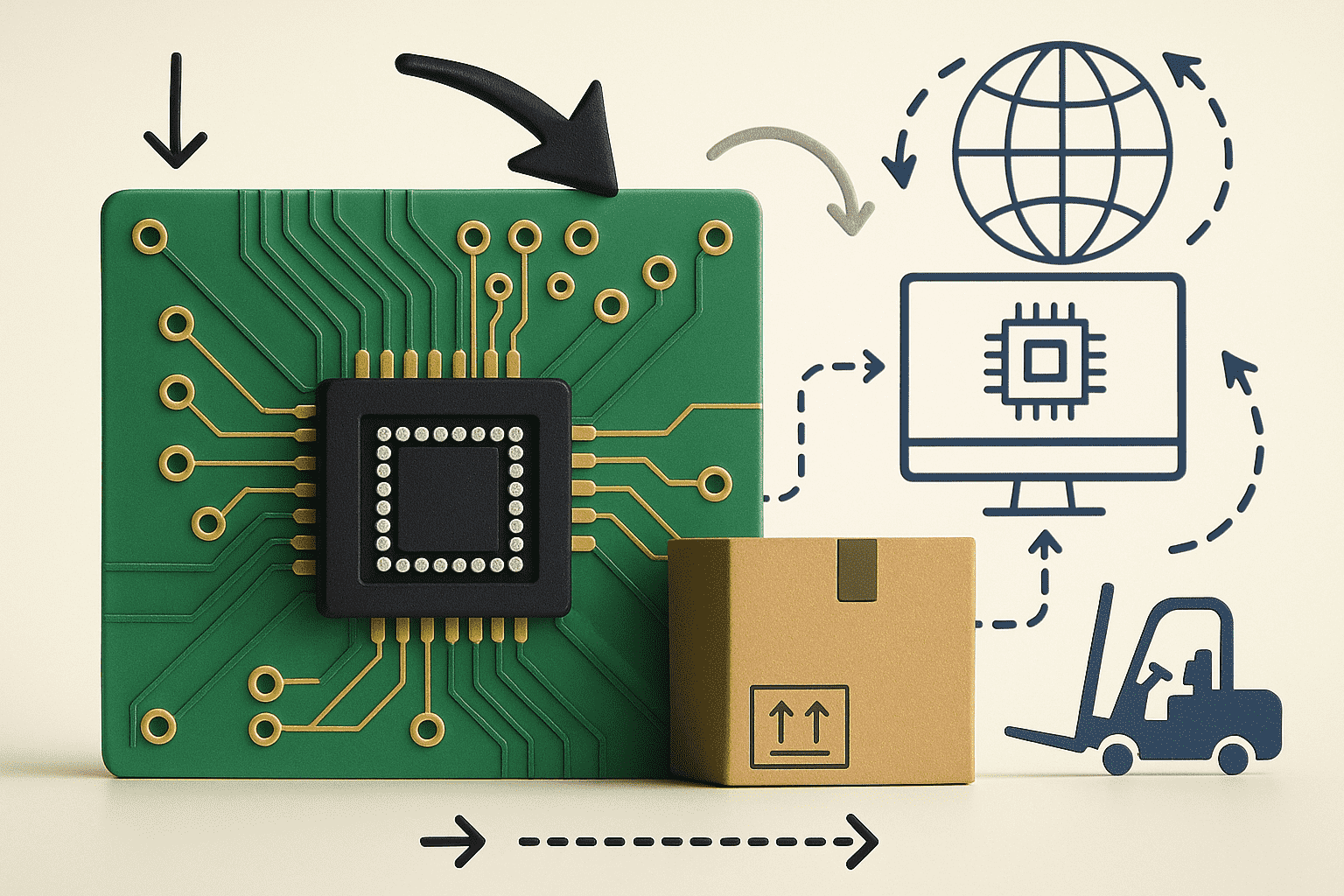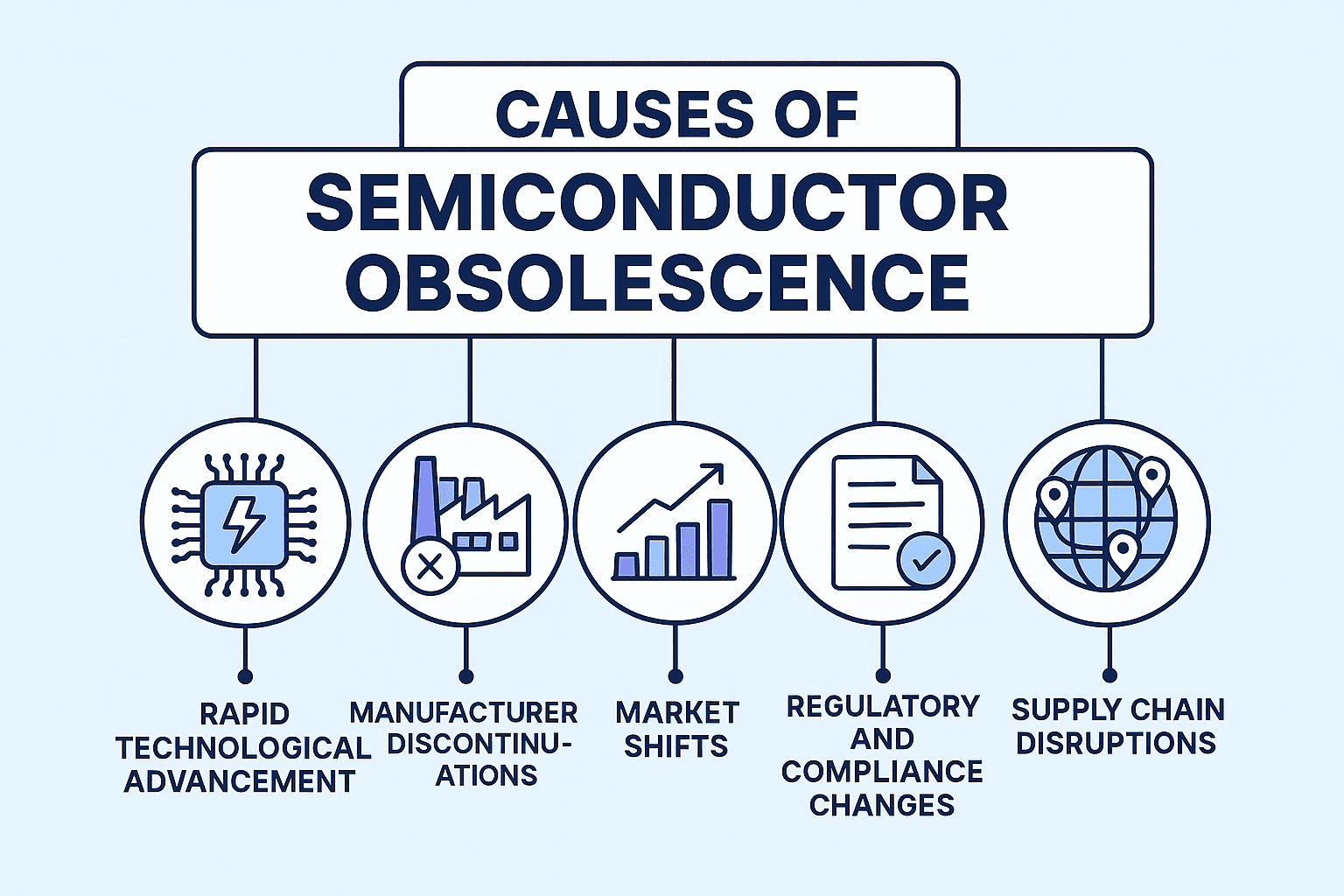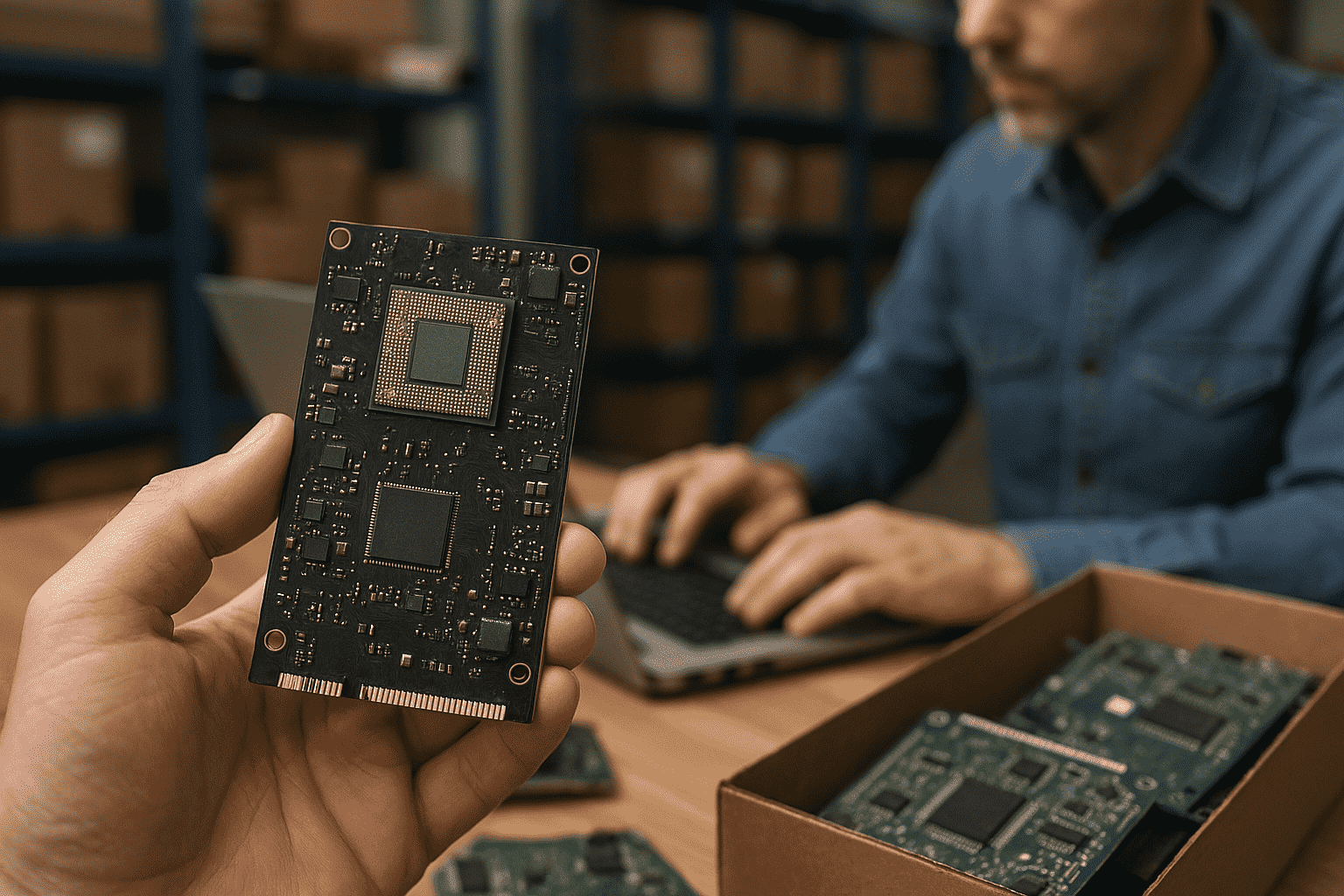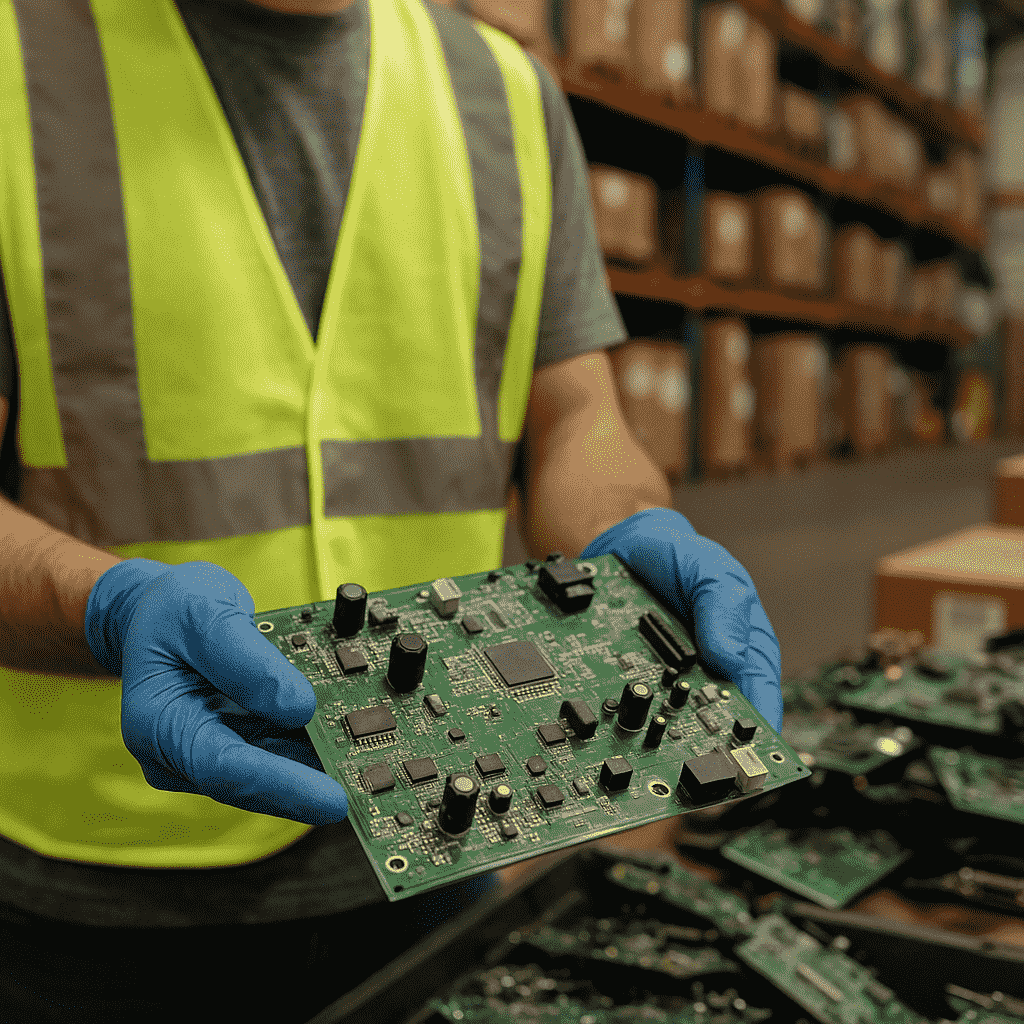Semiconductor obsolescence occurs when a chip or electronic component is no longer produced or supported by the original manufacturer. As technology advances rapidly, older semiconductors are discontinued and become obsolete, making room for new, more efficient alternatives. This trend creates challenges for organizations that rely on stable, long-term access to specific components.
The financial impact of semiconductor obsolescence is significant. According to research from the University of Maryland, prices for obsolete chips typically rise to 10 or 15 times their original value. For instance, a component that sold for $3 during its production life can cost $30 or more once it becomes obsolete.
In this article, you’ll learn what semiconductor obsolescence is, what drives it, and which practical steps you can take to manage this growing challenge.
What Is Semiconductor Obsolescence?

Semiconductor obsolescence occurs when the original manufacturer permanently discontinues production or support of a specific electronic component or chip. Once discontinued, the part becomes unavailable through regular distribution channels, directly impacting your procurement strategy and production schedule.
Obsolescence can be either planned or unexpected. Planned obsolescence involves an End-of-Life (EOL) announcement from the manufacturer, giving you advance notice and time to secure alternative sources or execute a last-time buy.
Unexpected obsolescence, however, arises suddenly due to unforeseen events such as market disruptions, manufacturer shutdowns, or abrupt supply chain issues, leaving minimal time to respond or adjust your sourcing strategy.
Causes of Semiconductor Obsolescence

Understanding the root causes of semiconductor obsolescence is essential for proactively managing risks in your supply chain. Several key factors drive components toward obsolescence, impacting your procurement strategy and operational continuity.
1. Rapid Technological Advancement
The pace of innovation in the semiconductor industry means new, more powerful chips are released regularly. Manufacturers discontinue older components to focus resources on next-generation products. As a result, the chips your equipment relies on can become obsolete much sooner than expected, creating challenges for long-term support and inventory management.
2. Manufacturer Discontinuations
Manufacturers periodically discontinue semiconductor components through formal End-of-Life (EOL) announcements. These notifications specify timelines after which production and official support cease, creating urgency in your procurement processes. Failure to respond promptly can disrupt production schedules, reduce procurement efficiency, force costly redesigns, or lead to difficult sourcing from secondary markets.
3. Market Shifts
When demand for specific semiconductor components declines significantly, manufacturers often discontinue production to maintain profitability. Low-demand components become difficult to source, putting pressure on your procurement team to identify suitable replacements quickly or risk costly production delays.
4. Regulatory and Compliance Changes
Regulatory updates, such as new RoHS, REACH, or environmental compliance standards, frequently result in semiconductor obsolescence. Components unable to meet updated regulations are phased out, forcing your procurement team to rapidly source compliant alternatives or adapt product designs to remain operational and avoid penalties.
5. Supply Chain Disruptions
Disruptions in the supply chain, including geopolitical conflicts, natural disasters, or unexpected economic events, can trigger sudden semiconductor obsolescence. When manufacturers face these disruptions, they may discontinue specific components abruptly, leaving your procurement team with limited time to secure alternatives or risk interruptions to your production schedule.
Strategies for Managing Obsolete Semiconductors

Person holding a computer circuit board in a warehouse, with another person working on a laptop and several other circuit boards in a box on the table.
Effectively managing semiconductor obsolescence requires proactive strategies that help you anticipate and reduce supply chain disruptions. By implementing structured approaches, your team can maintain production continuity and minimize financial risks.
1. Early Lifecycle Planning and Risk Assessment
Proactive lifecycle management enables you to identify obsolescence risks early, providing sufficient lead time for mitigation. Regularly reviewing your Bill of Materials (BOM) helps pinpoint at-risk components, allowing strategic planning before disruptions occur. Lifecycle forecasting tools further enhance visibility by predicting the longevity and availability of critical parts, enabling informed sourcing decisions and timely component substitutions.
2. Last-Time Buy (LTB)
A last-time buy (LTB) is your final opportunity to purchase a discontinued semiconductor before it becomes unavailable. Execute an LTB when the manufacturer issues an official End-of-Life notice and provides a closing window for orders. Early action is critical—delaying this decision can leave your production exposed to costly gaps.
To determine the right purchase quantity, analyze historical usage, future production forecasts, and any contractual service obligations. Consider potential design changes or shifts in customer demand that could affect your needs. Proper inventory management is essential; store components in optimal conditions to preserve reliability and minimize loss from degradation.
3. Alternative Component Sourcing
When original components are no longer available, alternative sourcing helps protect your production schedule and maintain product reliability. Start by identifying cross-referenced parts or functional equivalents that meet your technical and compliance requirements. Engage with authorized distributors and trusted suppliers to verify availability and authenticity before making a selection.
In cases where exact substitutes are unavailable, evaluate minor redesigns to accommodate similar components. Document all qualification steps to ensure quality and traceability. Establishing relationships with multiple suppliers reduces the risk of future shortages and strengthens your sourcing strategy.
4. Circular Economy Approaches for Secondary Sourcing
Adopting circular economy practices allows you to secure obsolete semiconductors from secondary sources, including surplus inventory, certified resellers, industrial liquidators, and asset recovery partners. This strategy supports the development of a resilient secondary supply chain, ensuring continued access to discontinued components while promoting cost efficiency and sustainability.
To minimize risk, partner with reputable suppliers and industrial liquidators who offer traceability and rigorous quality assurance. Integrating circular economy channels into your sourcing approach strengthens supply chain resilience and helps maintain operational continuity when primary sources are no longer available.
5. Inventory and Buffer Stock Planning
Maintaining strategic reserves of critical or high-risk semiconductors is an effective way to manage the uncertainty of obsolescence. By building a buffer stock, you ensure continuity in production even when supply becomes unpredictable or components are discontinued.
Successful buffer stock planning requires a clear understanding of your usage patterns, lead times, and product life cycles. Regularly review your inventory levels and update forecasts to align with market changes. It's important to balance the costs of carrying additional inventory against the risk of production delays or shutdowns. Invest in secure storage and implement strong inventory controls to prevent loss, degradation, or obsolescence of stocked components.
How Amplio Can Support Your Semiconductor Obsolescence Management

Amplio offers specialized support for organizations facing semiconductor obsolescence. Our platform connects you to a global network of qualified buyers and suppliers, streamlining the sourcing of critical components and inventory management at every stage of the product lifecycle.
With real-time market data and advanced analytics, Amplio helps you forecast risks, identify alternative sourcing options, and maintain operational continuity. If you need to liquidate obsolete assets, our turnkey solutions ensure secure, compliant, and efficient asset recovery.
Contact us now to enhance your obsolescence management strategy and safeguard your production against supply chain disruptions.





